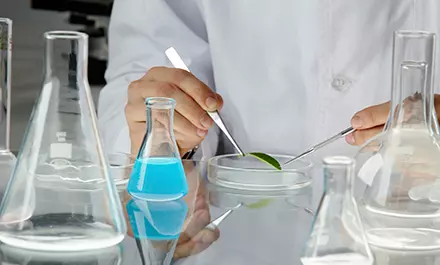
How to make flavorings for ejuice?
Electronic cigarette or e-cigarette has become a common aspect of modern-day society. E-cigarettes or vaping devices work on the principle of evaporating liquids known as e-liquids or vape juice. E-juice is available in different flavors and nicotine concentrations to satisfy the taste buds and nicotine cravings of the vapers. E-juice is a vital component of the vaping experience and forms the backbone of the vaping atmosphere. The e-juice market is flooded with a variety of flavors, each offering its unique taste. However, creating the perfect flavor for e-juice is a complex process that requires expertise in e-juice making. The purpose of this essay is to create a guide on how to make flavorings for e-juice.
Understanding E-Liquid
E-liquid or vape juice is the liquid component used in electronic cigarettes, vaporizers, and pod systems. E-liquid consists of four essential ingredients: vegetable glycerin (VG), propylene glycol (PG), flavorings, and nicotine. The flavorings used in e-juice are a combination of natural and synthetic ingredients that are safe for human consumption.
Vegetable Glycerin and Propylene Glycol
Vegetable glycerin (VG) and propylene glycol (PG) constitute the base of e-juice. VG is a viscous, colorless, and odorless liquid that is extracted from palm oil, soybeans, or coconut oil. VG is responsible for producing heavy vapor clouds and has a slightly sweet taste. VG is best suited for vapers who prefer a smooth and mellow vaping experience.
Propylene glycol (PG) is a clear and colorless liquid that is commonly used in the food industry as a preservative. PG has a thin consistency and enhances the flavors of e-liquid. PG produces a throat hit that mimics the sensation of smoking traditional cigarettes and is suitable for vapers who prefer a stronger hit.

Focusing on Flavorings
The flavorings used in e-juice are a combination of natural and synthetic ingredients used to recreate the taste of foods, fruits, drinks, or spices. Flavorings are vital components of e-juice that make the vaping experience more enjoyable and flavorful. There are four types of flavorings that vapers can choose from: natural flavors, artificial flavors, organic flavors, and flavors with additives.
Natural Flavors
Natural flavors are extracted through mechanical or chemical processes from natural products such as fruits, vegetables, or spices. Natural flavors are more expensive than artificial flavors and are often used in high-end e-liquid brands to create unique and premium flavors. However, natural flavors have the disadvantage of being less stable than artificial flavors, which tend to have a longer shelf life.
Artificial Flavors
Artificial flavors are chemically synthesized flavors that are created in a laboratory. Artificial flavors are less expensive than natural flavors and are more stable, giving them a longer shelf life. However, some vapers prefer natural flavors as they are considered safer and healthier than synthetic flavors.
Organic Flavors
Organic flavors are flavors extracted from organic food products. These flavors are similar to natural flavors, but they are extracted from organic food products that have been certified by the USDA.
Flavors with Additives
Flavors with additives are flavorings that contain additional chemicals or sweeteners to enhance the flavor and aroma of e-juice. These additives can include diacetyl, acetyl propionyl, or other chemicals that can cause health concerns. Flavors with additives should be used with caution as these chemicals can be harmful when inhaled.
Creating Unique Flavors
Creating unique flavors for e-juice requires a meticulous approach where the flavors are tested and mixed in different ratios until the desired flavor is obtained. The following steps can be used to create unique flavors for e-juice.
1. Choose a Base Flavor
The first step in creating a unique flavor is to select a base flavor. A base flavor provides a foundation for the flavor and can be combined with other flavors to create a unique blend. For instance, if a vaper wants to create a watermelon and mint flavor, watermelon would be the base flavor.
2. Select Secondary Flavors
After selecting a base flavor, the vaper can select two or three secondary flavors to complement the base flavor. In our watermelon and mint example, the secondary flavors would be mint and perhaps pear or cucumber.
3. Mixing Ratios
Once the base and secondary flavors have been selected, the vaper can experiment with different mixing ratios to create a unique blend. Mixing ratios can range from 2% to 20% for all the components. For instance, a vaper can start with a 10% concentration of watermelon, 5% concentration of mint, and 3% concentration of cucumber flavorings to create a unique watermelon, mint, and cucumber blend.
4. Testing Flavor
After mixing the flavors, the vaper should test the flavor by dripping a few drops on their vaping device and inhaling. If the flavor is not satisfactory, the vaper can adjust the mixing ratios or add new flavors to create the perfect blend.
Creating the perfect flavor for e-juice is a complex process that requires expertise in e-juice making. E-juice flavors can be natural, artificial, organic, or contain additives. The process of creating unique flavors for e-juice involves selecting a base flavor, selecting secondary flavors, mixing ratios, and testing the flavor. Creating unique flavors for e-juice is an art that requires patience, skills, and experience. However, with the right approach, any vaper can create unique and flavorful e-juice blends.

We will contact you as soon as possible









